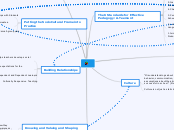The 6 Standards for Effective Pedagogy: A.Teemant
6.Critical Stance: Teaching to Transform Inequities
5. Instructional Conversation: Teaching through Conversation
4. Challenging Activities: Teaching Complex Thinking.
3. Contextualization: Making Meaning: Connecting School to students' lives.
2. Language and Literacy Development: Developing Language and literacy across the Curriculum.
1. Joint Productive Activity: Teacher and Students Producing Together
Transformed Classrooms: Description, Principles, and Criteria The Five Effective Standard Pedagogy (Tharp)
Culture
"Misunderstandings about the role of culture in behavior, communication, and learning often lead to assumptions about the abilities of children to be successful in school." ( Zion and Kozleski)
Culture is not just a static but also a dynamic.
Theories
Multiculturalism
Zone of Proximal Development
Constructivism
Scaffolding
Putting the SocioCultural Frame into Practice
Building Strong Relationships with Students
Connect Curriculum with Students' lives to create a context-rich learning environment.
Engage students in paired and small-group work
Building Relationships
Building relationships helps teachers develop social skills in their students.
Having positive and high expectations for the students (Vitto, Chp1).
Independent and Dependent Learners
Culturally Responsive Teaching
Knowing and Valuing and Shaping One's Culture ( Brown)
Culture Puzzles help people understand how they came to be who they are. They raise self-awareness, increases cross-cultural communication, improve authentic cross-cultural knowledge, and building a cohesive classs community.
